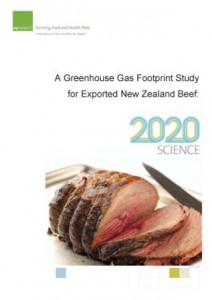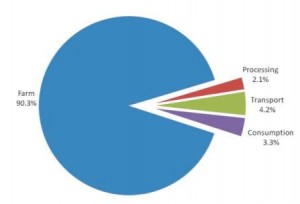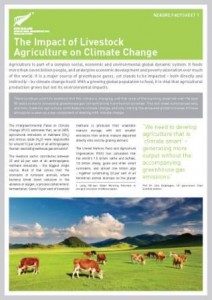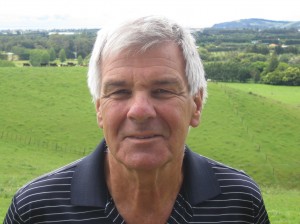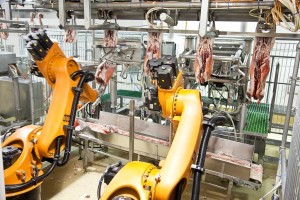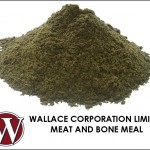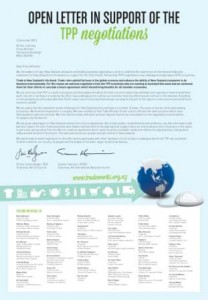Business representatives from four economies – US, NZ, Canada and Australia – have met in Auckland to press for more urgency in concluding the Trans Pacific Partnership (TPP) negotiations currently underway.
“In September business representatives from across the TPP member economies urged governments to conclude an ambitious, comprehensive and high standard outcome in 2013,” says Cal Cohen, president of the Emergency Committee for American Trade (ECAT) speaking on behalf of the US Business Coalition for TPP.
“We are glad this call has been taken  on board and we express our strong support for this goal. It is now time for negotiators to tackle the more sensitive issues to ensure this deadline can be met.”
on board and we express our strong support for this goal. It is now time for negotiators to tackle the more sensitive issues to ensure this deadline can be met.”
“TPP has the capacity to change the way business is done in the Asia Pacific region. This is what is needed to grow economies and create jobs,” says Stephen Jacobi, executive director of the NZ US Council and NZ International Business Forum.
“We ap preciate the task is complex but we urge negotiators meeting in Auckland this week to accelerate their efforts and narrow their differences so the benefits of TPP can be brought forward at a time of increasing economic difficulty.”
preciate the task is complex but we urge negotiators meeting in Auckland this week to accelerate their efforts and narrow their differences so the benefits of TPP can be brought forward at a time of increasing economic difficulty.”
“Canada is joining the TPP negotiations for the first time here in Auckland and is determined to participate in a way that builds consensus for a strong outcome,” said Kathleen Sullivan, executive director of the Canadian Agri-food Trade Alliance (CAFTA).
 “Our immediate priorities are addressing the proliferation of non-tariff barriers which impede trade and issues like rules of origin that can prevent trade occurring even when free trade agreements (FTAs) are put in place. There is a lot at stake for Canada in TPP and we are glad to be participating as one of eleven APEC economies.”
“Our immediate priorities are addressing the proliferation of non-tariff barriers which impede trade and issues like rules of origin that can prevent trade occurring even when free trade agreements (FTAs) are put in place. There is a lot at stake for Canada in TPP and we are glad to be participating as one of eleven APEC economies.”
“Australia has a lot to gain from a successful outcome to TPP which can provide an opportunity to reduce the complexity associated with the noodle bowl of over-lapping and contradictory FTAs in the region,” said Bryan Clark, director, trade and international affairs, Australian Chamber of Commerce and Industry (ACCI).
“ Simplification of the supply chain will translate into reduced business costs and increase the time in which products move around the region. That can only advantage businesses and consumers and lead to better economic outcomes for all member economies.”
Simplification of the supply chain will translate into reduced business costs and increase the time in which products move around the region. That can only advantage businesses and consumers and lead to better economic outcomes for all member economies.”
Asia Pacific business organisations have earlier reaffirmed their view that a successful TPP will be:
- Comprehensive – with no product exclusions and with commercially meaningful and flexible rules of origin.
- High quality – with strong standards across all main areas, from transparency, investment and government procurement to intellectual property, e-commerce and sanitary and phytosanitary measures.
- Ambitious – with the elimination of tariffs and non-tariff barriers on trade in goods and services and investment no later than 2020, the deadline set for free and open trade and investment in the Bogor goals.
- Innovative – with concrete new commitments on new generation and behind the border issues, including eliminating chokepoints in the operation of regional supply and value chains, fostering small and medium-sized business participation in expanding trade, facilitating regulatory coherence and promoting and protecting innovation.
- Enforceable – with clear commitments, and strong and transparent state-to-state and investor-to-state dispute settlement mechanisms.
- A living agreement – open to accession by other Asia-Pacific economies, provided these economies share TPP’s ambitious vision and can demonstrate their ability to accede to an agreement with the characteristics described above.
Business representatives from TPP member economies will join government negotiators and other representatives of civil society at a Stakeholder Forum in Auckland tomorrow (7 December).

